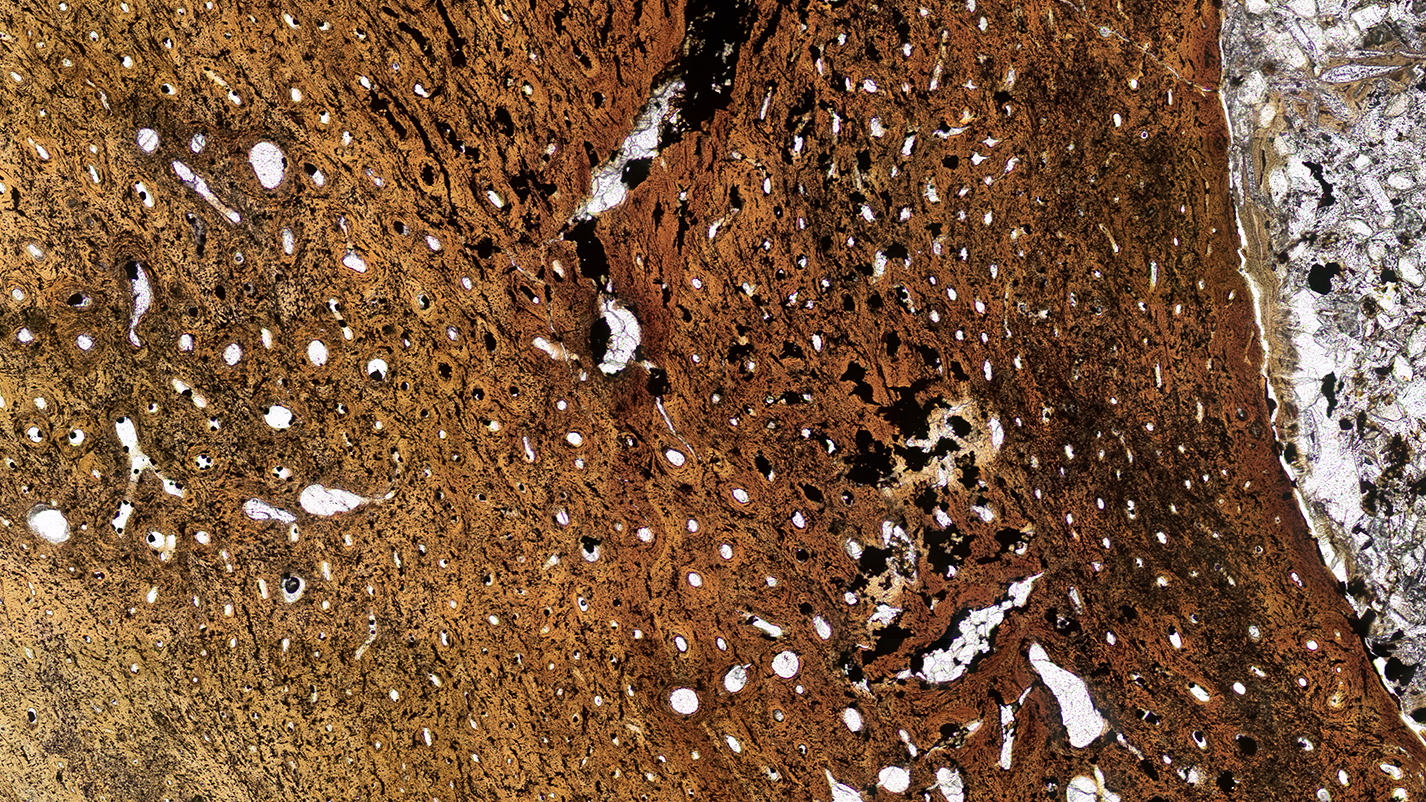This article first appeared in Issue 14 of our free digital magazine CURIOUS.
Big or small, herbivorous or carnivorous, and whether they died of old age, disease, or predation, do we know what a lifespan looked like for dinosaurs?
We asked Professor Paul Barrett, head of fossil vertebrates at London’s Natural History Museum, and he told us there’s a surprising link between dinosaurs and trees when it comes to figuring out how old they were.
Can we calculate the lifespan of extinct animals?
Paul Barrett (PB): We can generally work out how long it takes for an animal to reach full size or adulthood, but that doesn’t tell us how long they continued to live as adults. And we don’t really have a good method for determining how much longer beyond that full-size range they lived. One thing we’ve noticed with dinosaurs, which probably doesn’t hold for other animals, is that they tend to die while they’re still growing.
Mammals tend to reach adult size, live a few years, and carry on. For dinosaurs, it looks like they got to reproductive age, started reproducing, and then often died before they reached their full-size potential.
Does that mean a dinosaur in captivity could just keep growing?
PB: Probably not forever. We don’t think they had continuous growth like crocodiles who just keep growing very slowly throughout their whole lives. We do know from a few dinosaurs that growth stopped. It’s just that in most of the examples we look at, growth is still happening. Eventually, they do reach a maximum size and stop growing, but dinosaurs don’t often get to that point. I like to explain it by saying dinosaurs have kind of rockstar life cycles, they basically live fast and die young.
How do we know how fast they grew?
PB: The way that we get that growth rate is by looking at growth rings in bones. We take the bones, slice them up, and look at them under a microscope to look at the different tissues making up that bone. From work that’s been done on living animals, we know that some of those tissues were deposited by bone that’s growing rapidly, while other tissues are deposited by bones that are growing slowly.
A section of femur bone from the dinosaur Hypsilophodon foxi.
Image credit: Emily Brown
We also get interruptions in growth each year due to seasonal factors, like changes in temperature, day length, etc so you get rings developing within the bones, almost like tree rings. We then count those to get an idea of the number of years that the animal was growing for. So, it’s a very similar process to aging a tree. The rate comes from looking at the spacing of those rings. If there’s lots of growth going on, the rings are really thick. If there’s not very much growth going on, the rings are narrower.
Subscribe to our newsletter and get every issue of CURIOUS delivered to your inbox free each month.
Do we reckon size correlated to longevity?
PB: This is a relationship that holds across all animals, as far as we can tell. Basically, the larger the animal is, the longer its lifespan is, so the big ones were probably around for quite a long time, the smaller ones much less so.
Beyond predation, what were they dying of?
PB: All the kinds of things that you’d expect a living animal to die of: diseases, bad luck, being struck by lightning, hit by a tree, or getting caught up in a flood. But the major causes of death for living animals are generally starvation or dehydration, due to lack of food and water from seasonal droughts. Then, to some extent, diseases, predation, and really old age, just everything wearing out and not being able to chew or digest things anymore.
So, how long do we think dinosaurs lived?
PB: Very large sauropod dinosaurs probably took about 30 to 35 years to reach maximum size, and we assume if they did that maybe they would have lived a bit longer beyond that period so maybe 30, 40, or 50 years for the really big dinosaurs.
Smaller dinosaurs – things like ornithopod dinosaurs, such as Dryosaurus or Hypsilophodon – look like they reached their full body size at around four to five years. After three or four years, unless they were really lucky, they were probably dying.
Is this surprising?
PB: We used to think that dinosaurs lived a really long time. If you get back to people writing about dinosaurs 50 years ago, it was assumed that the really giant dinosaurs must have been a bit like giant crocodiles or giant turtles or tortoises, and that they were maybe taking a century to reach those sizes. But one of the big surprises we’ve had in the last 20 years is that, actually, dinosaurs grew really fast. Like really, really fast, and as a result of that, they wouldn’t have been around for 100 years.
So, probably even the really biggest dinosaurs rarely broke 50. It’s a big surprise to people that work on them because you would assume that such a big animal would be around for a long time because huge animals like blue whales and elephants today have human-like lifespans of 70+ years. But these dinosaurs, which – in the case of the really big sauropod dinosaurs – can be 10 times the size of an elephant probably didn’t live as long.
CURIOUS magazine is a digital magazine from IFLScience featuring interviews, experts, deep dives, fun facts, news, book excerpts, and much more. Issue 17 is out now.
Source Link: What Was The Lifespan Of A Dinosaur?
